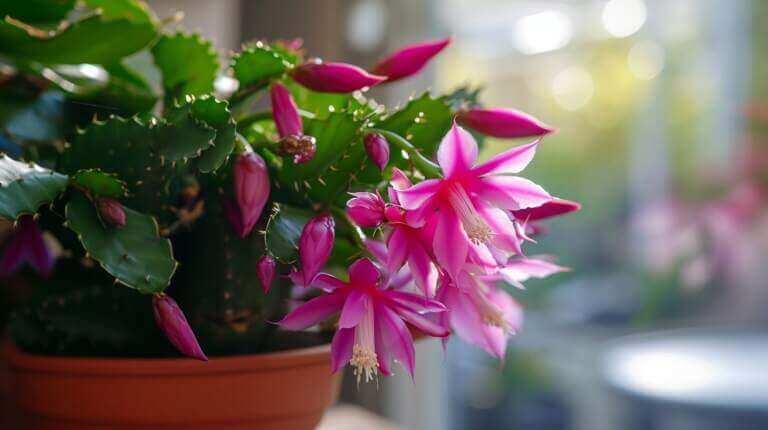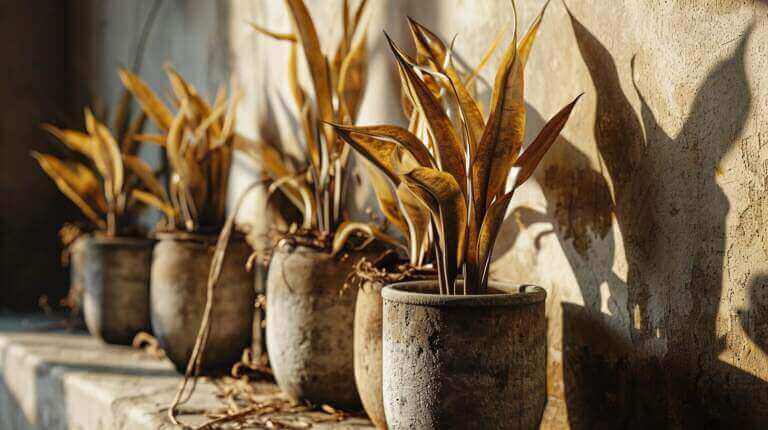Is Chinese Money Plant(Pilea Peperomioides) An Annual Or Perennial Plant? Pilea Plant Growth Habits Explained
The Chinese Money Plant, scientifically known as Pilea Peperomioides, is also commonly referred to as the Pancake Plant, UFO Plant, or Coin Plant. These names are derived from the plant’s distinctive round, coin-shaped leaves. It’s a popular houseplant thanks to its attractive foliage and ease of care. It’s also sometimes called the Missionary Plant.
Many plant enthusiasts wonder whether this beautiful foliage is an annual or perennial plant. Allow me to shed some light on this topic and provide you with all the information you need to care for your Chinese money plant.
Key Takeaways:
- Pilea peperomioides, also known as the Chinese money plant, is a perennial plant from the nettle family.
- It can live for several years with proper care, making it a long-lasting addition to your indoor space.
- Care for your Chinese money plant by providing it indirect light, well-draining soil, and regular watering.
- Pilea peperomioides is known for its attractive foliage, making it a popular choice among plant enthusiasts.
- With its circular, dark green leaves, this plant adds beauty and elegance to any room.
How to Care for a Pilea Peperomioides
If you have a Pilea peperomioides, commonly known as the Chinese money plant, it’s important to provide it with the right care to ensure its health and longevity as an indoor plant. Here are some essential tips for caring for your Pilea peperomioides:
- Light: Place your Pilea peperomioides in a location with bright indirect light. Avoid direct sunlight, as it can burn the leaves. A north or east-facing window is ideal for this plant.
- Watering: Water your Pilea peperomioides when the top few inches of the soil are dry to the touch. Be careful not to overwater, as this can lead to root rot. Allow the soil to dry out between waterings, and always use well-draining soil to prevent waterlogged conditions.
- Propagation: Pilea peperomioides can be easily propagated through offshoots that grow from the root system or nodes along the stem. Simply separate the offshoots or cuttings and plant them in separate pots with well-draining soil. Keep the new plants in a warm, humid environment until they establish roots.
- Fertilizer: Feed your Pilea peperomioides with a balanced, all-purpose fertilizer during the spring and summer months. Follow the instructions on the fertilizer packaging for the appropriate dosage. Avoid over-fertilizing, as it can lead to nutrient burn.
By following these care tips, you can ensure that your Pilea peperomioides thrives and continues to add beauty to your indoor space. With proper light, watering, propagation, and fertilization, your Chinese money plant will grow healthy and vibrant leaves, making it a stunning addition to any plant collection.
Table: Comparison of Care Needs for Different Indoor Plants
| Plant | Light | Watering | Propagation | Fertilizer |
|---|---|---|---|---|
| Pilea peperomioides | Bright indirect light | When top few inches of soil are dry | Offshoots or stem cuttings | All-purpose fertilizer during spring and summer |
| Monstera deliciosa | Bright indirect to medium light | When top inch of soil is dry | Stem cuttings or air layering | Fertilize monthly during growing season |
| Ficus elastica (Rubber plant) | Bright indirect light | Allow soil to dry partially between waterings | Stem cuttings or air layering | Fertilize every 2 weeks during growing season |
Remember that each indoor plant has different care requirements, and it’s essential to understand the specific needs of your plants to ensure their well-being. Take the time to research and learn about the care needs of your plants to provide them with the best possible environment for growth.
Differences Between Annual and Perennial Plants
When it comes to plant growth habits, understanding the differences between annual and perennial plants is essential. Annual plants complete their life cycle within one year. They start from seeds, grow, produce beautiful flowers, set seeds, and eventually die. Annuals are known for their rapid growth and abundance of blooms, adding bursts of color to your garden or landscape.
Perennial plants, on the other hand, have a longer lifespan. They can live for more than two years, going through cycles of growth, flowering, and dormancy. Perennials often have deeper root systems, allowing them to withstand harsh weather conditions. While their flowers may not be as profuse as annuals, perennials can provide a lasting presence in your garden year after year.
When it comes to propagation, annual plants rely heavily on seeds for reproduction. They produce an abundance of seeds, ensuring their species’ survival. Perennials, on the other hand, have various methods of propagation. Some perennials can be grown from seeds, while others can be propagated through divisions or cuttings. This diversity adds to the allure of growing perennial plants in your garden.
As we’ve discussed, pilea peperomioides, also known as the Chinese money plant, falls into the category of perennial plants. With its lush foliage and easy care requirements, it can bring beauty and longevity to your indoor space. By understanding the growth habits and life cycles of plants like the pilea peperomioides, you can select the best plants for your garden and provide them with the care they need to thrive.
FAQ
What is a Chinese Money Plant?
The Chinese Money Plant, also known as Pilea Peperomioides, is a popular indoor plant species known for its round, coin-like green leaves. It’s a member of the nettle family, Urticaceae, and is a perennial plant native to southern China.
How do you care for your Chinese Money Plant?
Caring for your Chinese Money Plant involves keeping the soil moist but well-draining to prevent root rot. The plant prefers indirect light and should be watered when the top inch of the soil feels dry. It’s an easy-to-care, low-maintenance plant that grows well indoors.
How do you propagate a Chinese Money Plant?
To propagate a Chinese Money Plant, you can take a cutting from the stem of the mother plant. Place the cutting in water until roots develop, then transfer it to a pot with well-draining soil. Keep the soil moist and place the new plant in indirect light.
What are the common names for Pilea Peperomioides?
Pilea Peperomioides is known by many common names including Chinese Money Plant, Pancake Plant, UFO Plant, Missionary Plant, and Friendship Plant. Its round, coin-like leaves have earned it these unique names.
What are some varieties of the Chinese Money Plant?
The Chinese Money Plant (Pilea Peperomioides) is a single species in the Pilea genus. However, there are other plants in the Pilea genus that are often mistaken for it, such as the Aluminum Plant (Pilea cadierei) and the Artillery Plant (Pilea microphylla).
How often should you water a Chinese Money Plant?
The Chinese Money Plant prefers the soil to be kept moist, but not waterlogged. It’s time to water when the top inch of the soil feels dry. Overwatering can lead to root rot, so make sure your plant is in a pot with well-draining soil.
How do you prune a Chinese Money Plant?
Pruning your Chinese Money Plant helps to maintain its shape and size. You can remove any yellow or brown leaves as they grow. If the plant is getting too tall, you can cut the stem back to the desired height.
How fast does a Chinese Money Plant grow?
The growth rate of a Chinese Money Plant can vary depending on its care. With the right care, including proper watering, indirect light, and regular feeding with a houseplant fertilizer, a Chinese Money Plant can grow quite quickly.






